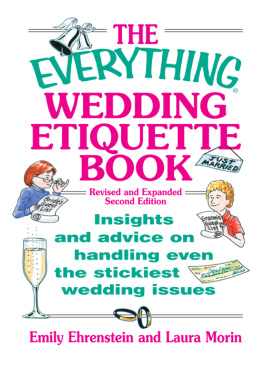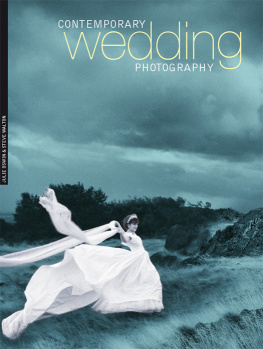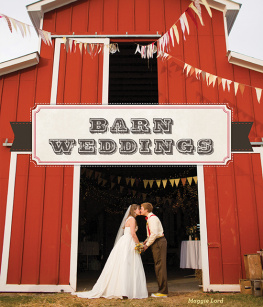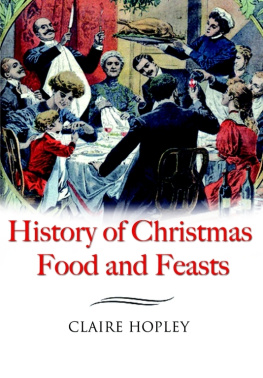About the Author
Claire Stewart graduated from the Culinary Institute of America, and was executive chef at the Continental Club in New York City, as well as executive sous chef at the Yale Club of New York City. She worked as chef tournant at Gees Brassiere in Oxford, England, and as chef poissonier at the Rainbow Room. Stewart was banquet chef at Highlawn Pavilion and a chef at Gracie Mansion in New York City. In her native California, she worked as chef tournant at Delta King in Sacramento and as a chef garde manger at the Hyatt Regency.
Stewart lives with her husband and teenage son, and she teaches culinary arts and restaurant management at City University of New York in Brooklyn.
As Long As We Both Shall Eat
Rowman & Littlefield Studies in Food and Gastronomy
General Editor: Ken Albala, Professor of History,
University of the Pacific (kalbala@pacific.edu)
Rowman & Littlefield Executive Editor:
Suzanne Staszak-Silva (sstaszak-silva@rowman.com)
Food studies is a vibrant and thriving field encompassing not only cooking and eating habits but also issues such as health, sustainability, food safety, and animal rights. Scholars in disciplines as diverse as history, anthropology, sociology, literature, and the arts focus on food. The mission of Rowman & Littlefield Studies in Food and Gastronomy is to publish the best in food scholarship, harnessing the energy, ideas, and creativity of a wide array of food writers today. This broad line of food-related titles will range from food history, interdisciplinary food studies monographs, general interest series, and popular trade titles to textbooks for students and budding chefs, scholarly cookbooks, and reference works.
Appetites and Aspirations in Vietnam: Food and Drink in the Long Nineteenth Century, by Erica J. Peters
Three World Cuisines: Italian, Mexican, Chinese, by Ken Albala
Food and Social Media: You Are What You Tweet, by Signe Rousseau
Food and the Novel in Nineteenth-Century America, by Mark McWilliam
Man Bites Dog: Hot Dog Culture in America, by Bruce Kraig and Patty Carroll
A Year in Food and Beer: Recipes and Beer Pairings for Every Season, by Emily Baime and Darin Michaels
Celebraciones Mexicanas: History, Traditions, and Recipes, by Andrea Lawson Gray and Adriana Almazn Lahl
The Food Section: Newspaper Women and the Culinary Community, by Kimberly Wilmot Voss
Small Batch: Pickles, Cheese, Chocolate, Spirits, and the Return of Artisanal Foods, by Suzanne Cope
Food History Almanac: Over 1,300 Years of World Culinary History, Culture, and Social Influence, by Janet Clarkson
Cooking and Eating in Renaissance Italy: From Kitchen to Table, by Katherine A. McIver
Eating Together: Food, Space, and Identity in Malaysia and Singapore, by Jean Duruz and Gaik Cheng Khoo
Nazi Hunger Politics: A History of Food in the Third Reich, by Gesine Gerhard
The Carrot Purple and Other Curious Stories of the Food We Eat, by Joel S. Denker
Food in the Gilded Age: What Ordinary Americans Ate, by Robert Dirks
Food Cults: How Fads, Dogma, and Doctrine Influence Diet, edited by Kima Cargill
As Long As We Both Shall Eat: A History of Wedding Food and Feasts, by Claire Stewart
Published by Rowman & Littlefield
A wholly owned subsidiary of The Rowman & Littlefield Publishing Group, Inc.
4501 Forbes Boulevard, Suite 200, Lanham, Maryland 20706
www.rowman.com
Unit A, Whitacre Mews, 26-34 Stannary Street, London SE11 4AB
Copyright 2017 by Rowman & Littlefield
All rights reserved. No part of this book may be reproduced in any form or by any electronic or mechanical means, including information storage and retrieval systems, without written permission from the publisher, except by a reviewer who may quote passages in a review.
British Library Cataloguing in Publication Information Available
Library of Congress Cataloging-in-Publication Data
Names: Stewart, Claire, 1964 author.
Title: As long as we both shall eat : a history of wedding food and feasts / Claire Stewart.
Description: Lanham : Rowman & Littlefield, [2017] | Series: Rowman & Littlefield studies in food and gastronomy | Includes bibliographical references and index.
Identifiers: LCCN 2016038463 (print) | LCCN 2016057129 (ebook) | ISBN 9781442257139 (cloth : alk. paper) | ISBN 9781442257146 (electronic)
Subjects: LCSH: Marriage customs and rites. | Weddings. | Food habits.
Classification: LCC GT2690 .S74 2017 (print) | LCC GT2690 (ebook) | DDC 392.5dc23
LC record available at https://lccn.loc.gov/2016038463
 The paper used in this publication meets the minimum requirements of American National Standard for Information SciencesPermanence of Paper for Printed Library Materials, ANSI/NISO Z39.48-1992.
The paper used in this publication meets the minimum requirements of American National Standard for Information SciencesPermanence of Paper for Printed Library Materials, ANSI/NISO Z39.48-1992.
Printed in the United States of America
Introduction to the Menu
T he study of food and culture incorporates the disciplines of sociology, anthropology, folklore, history, and economics. An examination of these spheres reveals some unlikely intersections, and among the undeniable and significant connections that bind them all together are the customs surrounding the consumption of food. An investigation of societal food traditions offers unique insight into a particular culture. Changing food habits can parallel and indicate shifts in cultural norms and may symbolize more meaningful changes that rest latent or unspoken in given societies. An analysis of the presentation of food and drinks served at celebrations, particularly at wedding feasts and banquets, may especially serve as an indicator of the social status of those who host the particular event.
For some people, food can be used as an expression of a desire for social betterment. Food, then, is unique in that it is literally taken into the body; yet the circumstances surrounding its consumption are also a reflection of this pursuit of societal advancement. The subliminal messages food embodies get reinforced by the celebration of milestones, and weddings are the most important of these social landmarks. Humans mark special occasionsreligious events, birthdays, anniversaries, and even funeralswith feasting. No occasion is held in higher regard than the wedding, and no cultural marker is as universal as the wedding feast. Champagne and other luxury items regularly served at weddings broadcast the social status of individuals (and also of the larger community).
French philosopher and social critic Roland Barthes addressed how food surpasses its function as a means of mere human survival. Barthes wrote that food is a mirror of total experiences, a summation of conditions, and can serve as a signal of those experiences. For example, Barthes wrote that coffee had become a circumstance, not a substance. Coffee was formerly so valuable it engendered wars. Its appeal was originally derived only from its ability to stimulate the nervous system. Present-day coffee consumption has morphed what was once an item into an action, and this action is an indicator of status, copious leisure time, and conspicuous consumption. Likewise, sparkling wine is used to make the toast at weddings; yet its use is mostly symbolic, with the glasses often left undrunk. Champagne has become an action that American weddings demand.
Contemporary weddings especially employ food and drink as a signal that the hosts have achieved economic success, and wedding receptions can serve as an example of Barthess idea of food as a way to announce social position. And champagne can serve as an extreme example of signaled luxury and a readily identifiable marker that an event is special.












 The paper used in this publication meets the minimum requirements of American National Standard for Information SciencesPermanence of Paper for Printed Library Materials, ANSI/NISO Z39.48-1992.
The paper used in this publication meets the minimum requirements of American National Standard for Information SciencesPermanence of Paper for Printed Library Materials, ANSI/NISO Z39.48-1992.